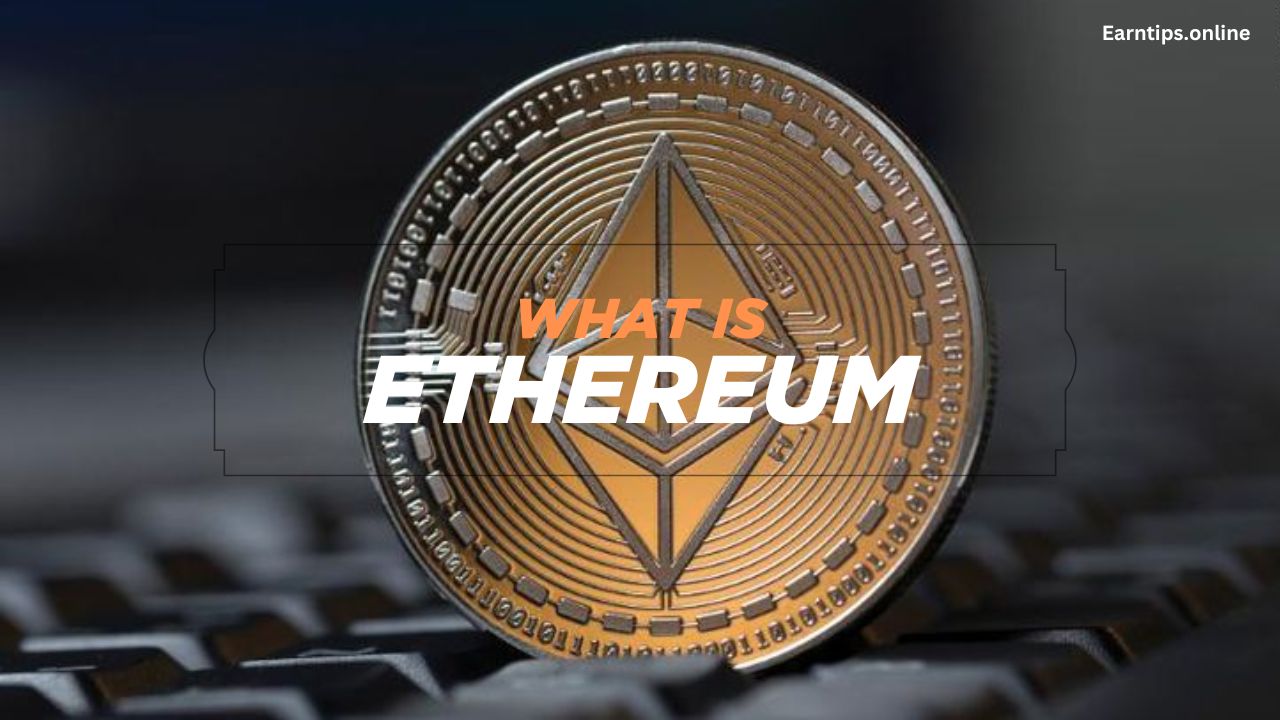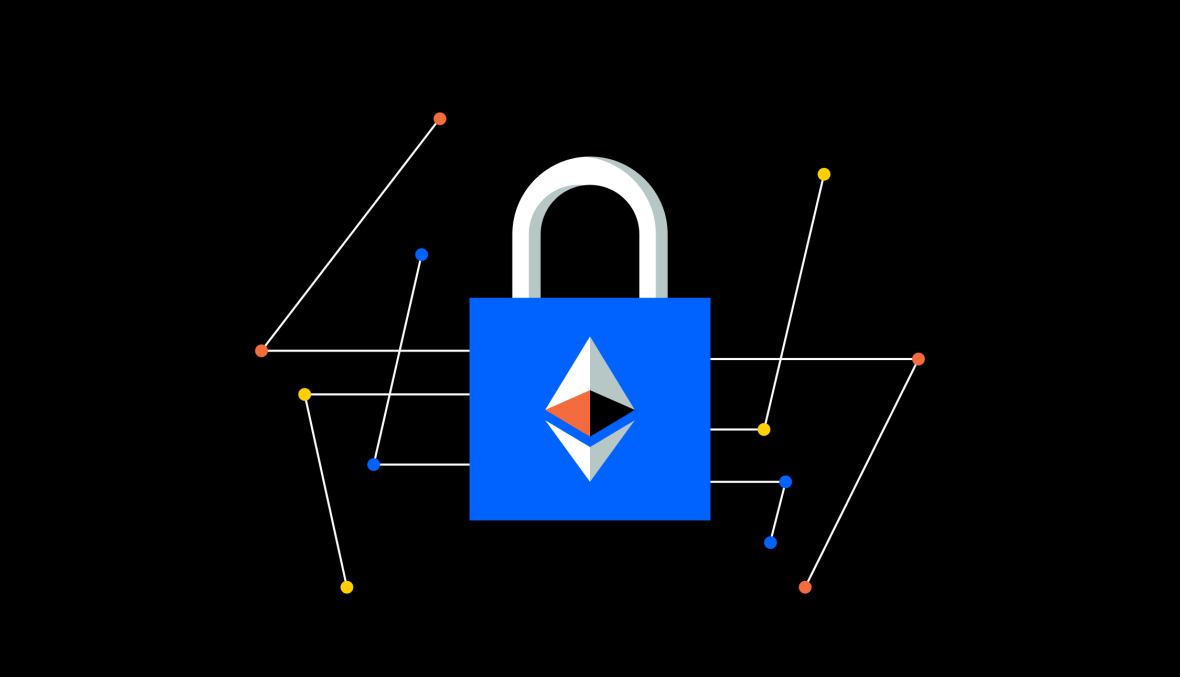What is Ethereum?
Ethereum, which launched in 2015, is the second-biggest cryptocurrency by market cap after Bitcoin. But unlike Bitcoin, the creators didn’t design Ethereum to be digital money. Instead, Ethereum’s founders set out to build a new kind of global, decentralized computing platform that takes the security and openness of blockchains and extends those attributes to a vast range of applications.
Everything from financial tools and games to complex database are already running on the Ethereum blockchain. Developers’ imaginations are the only limit to Ethereum’s future potential. The nonprofit Ethereum Foundation states that people can use Ethereum to codify, decentralize, secure, and trade just about anything.
- Ethereum has become a popular investment vehicle and store of wealth (and can be used, like Bitcoin, to send or receive value without an intermediary).
- The Ethereum blockchain allows developers to build and run a huge variety of applications: everything from games and advanced databases to complex decentralized financial instruments – meaning that they don’t require a bank or any other institution in the middle.
- Ethereum based apps re built using “smart contract.” Smart contracts, like regular paper contracts, establish the terms of an arrangement between parties. Unlike old-fashioned contracts, smart contracts automatically execute when the terms are met, eliminating the need for either participating party to know who is on the other side of the deal and without requiring any kind of intermediary.
- Developers and contributors worldwide operate and manage Ethereum, similar to Bitcoin, as an open-source project. No single individual owns it. Anyone with an internet connection can run an Ethereum node or interact with the network.
- Much like Bitcoin’s decentralized blockchain allows any two strangers, any where in the world, to send or receive money without a bank in the middle, smart contracts running on Ethereum’s decentralized blockchain allow developers to build complex applications that should run exactly as programmed without downtime, censorship, fraud, or third party interface.
Popular Ethereum based innovations include stable coins, decentralized finance apps (collectively known as DeFi), and other decentralized apps (or dapps).
What’s the Difference Between Ethereum, Ether, and ETH?
Ethereum is the name of the network. The Ethereum network uses “Ether” as its native cryptocurrency. That said, in day to day usage most people call the token “ETH” (or just “Ethereum”). As a way of sending, receiving, or storing value ETH works much like Bitcoin. But it also has a special role on the Ethereum network. Users pay fees in ETH to execute smart contracts, fueling the entire system. These fees are called “gas” for that reason.
If Bitcoin is “digital gold,” ETH can be seen as “digital oil.”
Is Ethereum Secure?
The Ethereum blockchain currently secures ETH with a technology called “proof of stake” (more on this below).
The fundamental ideas behind cryptocurrencies help make them safe: the systems are permission less and the core software is open source, meaning countless computer scientists and cryptographers have been able to examine all aspects of the networks and their security.
The security of apps running on the Ethereum blockchain is only as good as their developers have made them. For example, code can sometimes contain bugs that could result in loss of funds. While their source code is also visible to all, the user bases of each individual app are much smaller then Ethereum’s as a whole, and so fewer eyes are no them. It’s important to do research on any decentralized app you plan to use.
How does Ethereum Work?
You might have heard that the Bitcoin blockchain is a lot like a bank’s ledger, or even a checkbook. It’s a running tally of every transaction made on the network going back to the very beginning – and the entire network works together to ensure that the tally is accurate and secure.
The Ethereum blockchain, on the other hand, is more like a computer: while it also does the work of documenting and securing transactions, it’s much more flexible than the Bitcoin blockchain. Developers can use the Ethereum blockchain to build a huge variety of tools – everything from logistics management software to games to the entire universe of DeFi applications (which span lending, borrowing, trading, and more).
- Ethereum uses a ‘virtual machine’ to achieve all this, which is like a giant, global computer made up of many individual computers running the Ethereum software. Keeping all of those computers running involves investment in both hardware and electricity by participants. To cover those costs, the network uses its own cryptocurrency called Ether (or more commonly, ETH), which is similar to Bitcoin.
- ETH keeps the whole thing running. You interact with the Ethereum Network by using ETH to pay the network to execute smart contracts. As a result, the fees paid in ETH are called “gas.”
- Gas rates vary depending on how busy the network is. In September 2022, developers implemented Ethereum 2.0, a new version of the Ethereum blockchain that aims to increase efficiency.
How Do You Buy Ethereum?
However you acquire your ETH, you’ll need to understand a few basic concepts. The Ethereum network issues every address a public key and a private key, and you’ll need a wallet to manage your crypto holdings.
- Public Key: Think of this as the crypto version of an email address. Your Ethereum public key is where people can send you ETH and Ethereum based tokens like USDC and Dai. You can safely give this out to others.
- Private Key: Think of this like your password. You should generally avoid giving this out to people. A private key is a long staring of letters and numbers. (It can also be in the form of a series of words called a seed phrase). Its crucial to keep track of your private keys. If you lose them, you lose your Ether forever.
- Wallet: To store and secure your Ether you’ll need a wallet. If you’re just starting out, the easiest option is to make an account via the facepost app or facepost.com – in which case you’ll interact with a “custodial wallet” that stores and secures your private keys for you. As you progress you might want to investigate other wallet options that are built for interacting with decentralized finance (or DeFi) protocols such as Compound ( a lending and savings app) or Uniswap (a decentralized exchange that allows you to trade cryptocurrencies).
How does Ethereum have Value?
There are a few ways of thinking about the answer to this question. On one level, markets set Ethereum’s value like any other asset. People buy it with Bitcoin, dollars, euros, yen, and other currencies 24 hours a day. Depending on demand, the price can fluctuate from day to day. (The volatility of Ethereum’s value compared to currencies like the US dollar or equities like Fortune 500 stocks results from its status as an emerging technology.)
But why the market prices it the way it does is a much more complicated question. To many investors Ethereum’s value is based on it’s flexibility as a platform for issuing stable coins and running DeFi applications – resulting in a growing user base and growing transaction fees.




